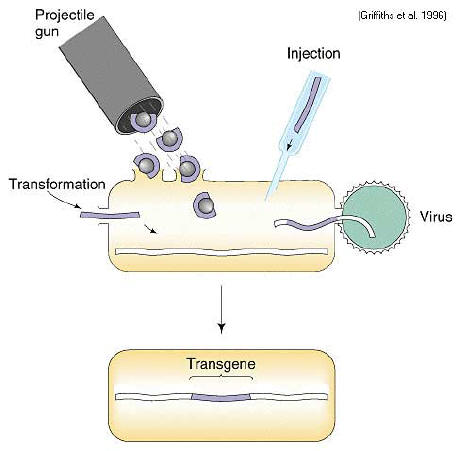|
Gene Transformation |
 Gene
Transformation is the basis of genetic engineering. Gene
Transformation is the basis of genetic engineering. Genes are transferred for many reasons such as ..... > to put valued genes into plants for various reasons usually to enhance food value or make the production cycle more efficient in one of many ways from disease, herbicide, insect, or parasite, resistance to better blossoms or nonstandard shapes or frost resistance. Gene therapy in humans is in its infancy but will soon show promise. Imagine curing cytic fibrosis by inserting healthy genes into lung cells!!!!! The issue of transgenics is hotly debated and will be for a long time. While NA seems to accept the notion of transgenic foods (Genetically Modified Foods), many European and African countries are not willing to participate in what they consider an experiment on the human population. Many people have reservations about the the interaction between transgenic and wild populations of plants and animals. Procedures There are several ways to transfer genes to other species cells (transformation) 1) bacteria plasmid vectors a) bacteria hold their genes material in loops called Plasmids that can be used to transfer genes from on e bacteria to another. If a gene can be spliced into the plasmid it can then be transferred into some other species. Agrobacterium tumifaciens is a good example, this bacteria normally transforms plant cambium tissue into a tumor in which it will live. This ability has been exploited to vector "valued" genes into commercial crops 2) a virus can be altered to insert novel genes (hopes for human gene therapy 3) blasting genes into cells with tiny bullet like metal particles coated in the desired genes 4) simple injection of individual cells useful if used on zygotes that will develop into whole organisms Issues include: ethics, allergies, ecological, health, |